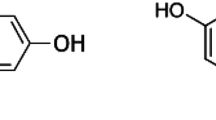Abstract
Risks associated with the production, use and disposal of 4,4′methylenedianiline (4,4′-MDA) have been under study by the Environmental Protection Agency (EPA). 4,4′-MDA was the first chemical to trigger section 4(f) of the Toxic Substances Control Act (TSCA), and EPA and the Occupational Safety and Health Administration (OSHA) have been working to find the most effective way to control the chemical’s risks. Limited information on dermal penetration rates and exposure levels have introduced uncertainty into the dose side of the dose-response equation. A cancer bioassay, on the other hand, has provided good data for estimating response, at least within the tested dose range.
A technique for estimating lifetime average daily doses to workers based on the limited dermal exposure data and inhalational exposure levels has been employed. This technique has been used to estimate the degree of risk reduction that protective clothing and equipment and improved industrial hygiene practices can produce.
The risk assessment information, complete with its uncertainties, is being made available to risk managers in EPA and OSHA, while additional work is planned to reduce uncertainty in the assessment. This work includes additional monitoring of workplaces and surface waters (the latter to assess possible contamination of drinking water supplies) and measurement of the chemical’s skin penetration rate. Since skin penetration rates can vary over several orders of magnitute, and since the limited data available indicate that dermal exposures in the workplace may be significant, reduction of uncertainty in this area is crucial for cost-effective risk management decisions.
Access this chapter
Tax calculation will be finalised at checkout
Purchases are for personal use only
Preview
Unable to display preview. Download preview PDF.
Similar content being viewed by others
References
CMA, 1983. Response of the Chemical Manufacturers Association Methylenedianiline Panel to EPA’s Section 4(f) Designation for MDA. June 27, 1983.
Cox, J.V., 1982. Letter of Steven D. Newburg-Rinn, Chief, Test Rules Development Branch, Office of Toxic Substances, U.S. EPA. Re: 4,4′-Methylenedianiline. November 4, 1982.
Crump, 1980. An Improved Procedure for Low-Dose Carcinogenic Risk Assessment for Animal Data. J. Environ. Path. and Toxicol. 5, 675 (1980).
DOE, 1983, Department of Energy. Response of the Albuquerque Operations, Office (AL) and Contractors to the Environmental Protection Agency (EPA) Request for Information for the Review of 4,4′-Methylenedianiline (MDA). Draft. Received by EPA. August 31, 1983.
EPA, 1983a. Exposure to and Control of 4,4′–Methylenedianiline. Draft report prepared under contract #68–02–3935. Work assignment 1–5. PEDCo Environmental, Inc. October, 1983.
EPA, 1983b. 4,4′–Methylenedianiline (MDA) Use and Substitutes Analysis. Draft Report prepared under contract #69–02–3935. Task order #6. ICF, Inc. September, 1983.
EPA, 1984, Docket No. OPTS 64000 A.
MCGill, D.B. and Motto, J.D., 1974. An Industrial Outbreak of Toxic Hepatitis Due to Methylenedianiline. N.Engl. J. Med. 291, 278 (1974).
NIOSH, 1976. Current Intelligence Bulletin 8. 4,4′-Diaminodiphenylmethane (DDM). January 30, 1976.
NIOSH, 1984a. Industrial Hygiene Survey Report of Olin Corporation, Moundsville, WV. Dr. Mark Boeniger, Industrial Hygiene Section, National Institute for Occupational Safety and Health, Cincinnati, OH. March 1984.
NIOSH, 1984b. Industrial Hygiene Survey Report of A.O. Smith/Inland Corporation, Little Rock, AR. Dr. Mark Boeniger, Industrial Hygiene Section, National Institute for Occupational Safety and Health, Cincinnati, OH. February 1984.
NTP, 1983. Xarcinogenesis Studies of 4,4′-Methylenedianiline Dihydrochloride in F344/N Rats and B6C3F Mice. National Toxicology Program Technical Report, Series No. 248. NTP-81–143. NIH Publication No. 83–2504. June 1983.
Vaudaine, M., Lery, N., Diter, J.N., Droin, M. and Charnaillard, C., 1982. Diamino-Diphenyl Methane: An Example of Toxic Agent Monitoring in the Workplace at Rhone-Poulenc Industrie. J. Toxicol. Medicale 2, 207 (1982).
Author information
Authors and Affiliations
Editor information
Editors and Affiliations
Rights and permissions
Copyright information
© 1987 Plenum Press, New York
About this chapter
Cite this chapter
Hirzy, J.W. (1987). 4,4’-Methylenedianiline: Risk Assessment and Risk Management. In: Covello, V.T., Lave, L.B., Moghissi, A., Uppuluri, V.R.R. (eds) Uncertainty in Risk Assessment, Risk Management, and Decision Making. Advances in Risk Analysis, vol 4. Springer, Boston, MA. https://doi.org/10.1007/978-1-4684-5317-1_30
Download citation
DOI: https://doi.org/10.1007/978-1-4684-5317-1_30
Publisher Name: Springer, Boston, MA
Print ISBN: 978-1-4684-5319-5
Online ISBN: 978-1-4684-5317-1
eBook Packages: Springer Book Archive




